Zaklady programovania pre deti vo veku 9-13 rokov s podporou IT@School a T-Systems Slovakia.



Lemon's WordPress Blog
Zaklady programovania pre deti vo veku 9-13 rokov s podporou IT@School a T-Systems Slovakia.

Lately I’ve been looking a lot at online learning and trying to discuss it with friends, only to find out that only a few of them knew, what is actually available on the internet, and even fewer actually used these resources to further their learning. That’s why I’m writing this blog post now – for all my friends, who want to broaden their knowledge of various topics, but are struggling to find the right resources for that.
Coursera is a website that has been around for some years now, but keeps on getting better and better. The site offers most of it’s courses for free, with the option to purchase a Certificate in the given field / course. It also offers a multitude of so-called Specializations – multiple courses stringed together to enable the learner to get to know the topic and be able to apply the knowledge in future projects.
A new feature of the site, currently in beta, is also Learning Path – enabling the student to choose a goal of his learning (e.g. learning to code / write complex programs) and presenting him / her with a list of possible courses that may be of interest.
The course categories are very well organized and enable you to find a fitting course in short time. Available are courses in Arts & Humanities, Business, Computer and Data Science, Life Sciences, Math and Logic, Personal Development, Physical Science and Engineering, Social Sciences, and Language Learning. As a bonus to all these, you can also get a fully-online degree or professional certificate on Coursera in a couple of areas of study.
But Coursera is not only available from the website – there are also official apps for both iPhone and Android devices available on the App Store and Google Play, enabling you to learn on the go, either while commuting to work or school, or simply when you have 10-15 minutes to spend watching a video or reading an article.
To access Coursera and / or download their app, please go to: https://www.coursera.org
I never was an Apple fanboy and probably would have steered away from their products had it not been for the original iPhone that a friend of mine purchased way back in 2007. I still remember how awkward it was to type on it (fixed in later software revisions) and how expensive it was. None the less, it was a very appealing device, and had something that most devices at the time lacked – it was a full fledged phone and gaming device in one, not relying on Java apps like the rest of them, but bringing an all new software experience.
The iOS was based on OS X and enabled developers to “make amazing things happen” – once the 2.0 version brought the App Store. And that’s when I was hooked :).
I purchased my first iPhone 3G, 16GB model, in early 2009 from a previous owner for roughly 500€ without contract and almost immediately fell in love with it. The phone felt like from another universe compared to the previous ones I had (mind you, they were not bad phones as such, just not as advanced at that time). With the advent of the App Store and it coming to Slovakia where I live, I started to enjoy the iPhone more and more as new apps and games came out. The App Store also brought an important change to the gaming industry on mobile phones – namely games that cost 0.99$, or in my country 0.79€ each. Comparing them to the Java based games on other mobile phones that cost at least twice as much was like comparing heaven and hell :). There were limitations to the downloading of apps over 3G, imposed by the deal between Apple and AT&T who was the only carrier that sold the iPhone at the time, but even that wasn’t really a problem. I spent upwards of a 100€ on games and apps that year, but didn’t feel like I was losing money – the apps made the phone even better and the hours of gaming were well invested time (from a gamer’s point of view of course).
When iPhone 3GS came out, I felt a bit cheated by Apple because of the price I would have to pay to get it, so I decided to wait for the iPhone 4. My iPhone 3G has since gone through many hands, being used by a friend of mine for development, by my wife and daughter as their primary phone, and finally ending up in a drawer in the end, waiting for my youngest to want to play with it. Apple of course stopped supporting it end of 2010, with the last version of iOS 4.2.1 being stripped of many features that were deemed too unstable to run on it without slowing down the phone or impossible to be used (FaceTime).
After a while of not using it, I stumbled upon some interesting software made by the community for the iPhone 3G. Some of it was based on Cydia, the alternative App Store that existed since 2009, and some was completely new, bringing better user experience to the iPhone 3G. This software was called Whited00r and it mimicked the appearance of later released iOS versions, while keeping the phone on iOS 3.1.3, the most advanced and at the same time most stable version of iOS for the phone.
Whited00r running on iPhone 3G
I went through multiple older backups of my PCs and found my iTunes library from the time I used the iPhone 3G and was astonished how well the games looked and played even after the years that had passed – which brought me to the idea of writing this blog post to remind the owners of the iPhone 3G that their device is not obsolete, as Apple likes to label it, but still stands strong with a library of thousands of apps and games that are still fully usable on it. The only drawback is, you have to have the old versions of those apps / games stored somewhere, as Apple has pulled them from it’s servers a long time ago.

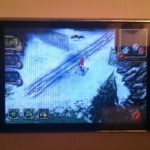 C&C: Red Alert for iPhone 3G
C&C: Red Alert for iPhone 3G
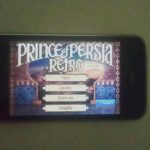 Prince of Persia Retro
Prince of Persia Retro Metal Gear Solid Touch
Metal Gear Solid Touch
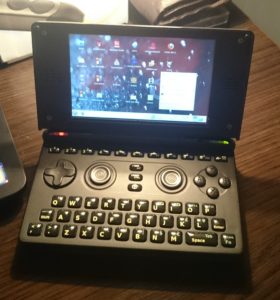
An idea that took longer to realize than the creators originally intended, the OpenPandora GmbH’s open source handheld Pandora was intended for everyday use on the road. Be it on a plane, on a train or in a bus, or simply whenever you need to wait for a couple of minutes to a couple of hours and need to get your gaming fix or coding hour in, the Pandora has you covered.
The specs of the Pandora are impressive for 2008, when the console was first designed, but do look dated to someone looking for more horsepower under the hood nowadays. It has an 800x480px resistive touchscreen (stylus included), is powered by an OMAP 3530 SoC (system-on-chip) with an ARM Cortex-A8 CPU at 600 MHz base frequency, overclocked safely to 900 MHz, and PowerVR SGX530 graphics at 110 MHz. Aditionally, it has 256MB RAM, 512MB internal flash memory and two SD card slots for memory extension. The ports include USB type A 2.0 port that can even power devices connected to the console, a mini-USB port (not micro, since mini was the standard at the time), an HDMI port, a charging port (compatible with PSP charger), 3.5mm jack for audio and two analog sliders – for volume and on/off.
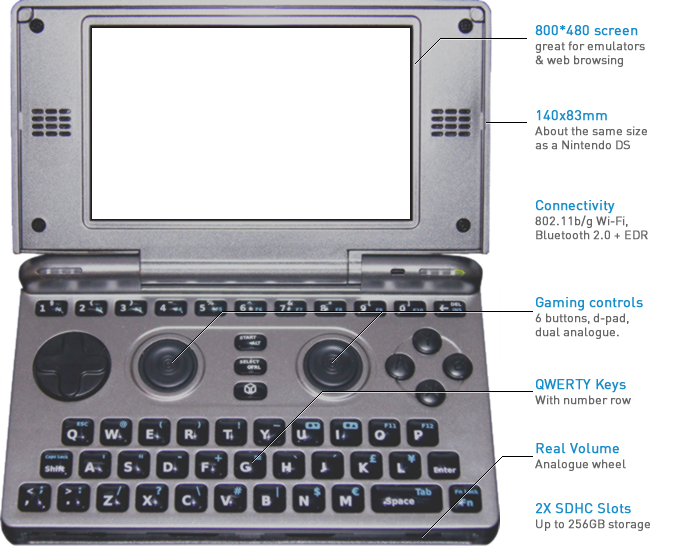
Since the actual release was postponed due to production issues and technology was quickly advancing, a newer model of Pandora was rolled out as an upgrade to the existing design. Therefore, there are 3 variants of Pandora available at the moment: Classic (OG – specs above), Rebirth (newer revision graphics, 512 MB RAM) and Pandora 1 GHz (Texas Instruments DM3730 SoC with 1 GHz CPU and 512 MB RAM – the defacto standard machine when comparing to other systems).
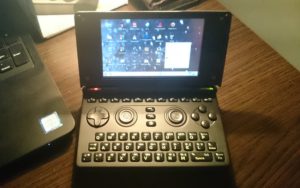
It was the first of its kind and although the price tag was pretty hefty (around 500-600€, depending on the configuration of the device) it probably paved the way for some gaming sub-laptops and the GPD Win (which I talked about in a different post). The huge fan base of developers also provided the community with a lot of useful software, optimized for the Ångström Linux that powers the Pandora. The spiritual successor to the Pandora is the Pyra handheld, which is currently in development, in the phase of a working prototype being finalized, and with production starting for most components.
Enjoy some more shots of the Classic model in the Gallery below.
A new 5.5″ mini-PC / console hybrid running Windows 10 came to my attention two weeks ago, although it has been in existence since last year.
And of course, being as obsessed with little gadgets as I am, I had to search for a place to buy it from. I was lucky that a guy from the city I work in was offering his for sale, so we came to an agreement and – here it is 🙂
Starcraft II cinematics
Successfully funded in an Indiegogo campaign by the GPD company from Hong-Kong (known mainly for emulator handhelds running Android), this little beast was released in October 2016, sporting a 1280×720 pixel touchscreen display, 4GB of RAM, 64 GB of internal storage and a quad-core Intel Atom processor with Intel HD 4000 type graphics.
I don’t want to bore you with the specs too much though, so I’ll just answer the question that most people ask when they see this – yes, it runs Skyrim.. and Diablo III, and GTA V and Heroes of the Storm.. and many other games, albeit with some tweaks to either the resolution or complexity of the displayed image. It’s also a fully fledged emulator device, capable of emulating older consoles up to Dreamcast and PS2.
The battery life is also pretty decent, with about 2-3 hours of hardcore multiplayer gaming over WiFi. And if you’re not a hardcore gamer, you’ll be even more satisfied – browsing the web, I could easily get to about 5-7 hours of usage.
The only (very small) flaw I see in this machine is the shiny display, which reflects too much light when under heavy sun light. Other than that, I’d say this machine is one of those few that make you scream “shut up and take my money!”
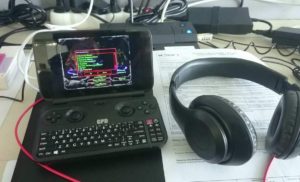
Starcraft running on GPD win.
Ports on the back side: USB type C for charging, HDMI out, micro SD card slot, USB type A 3.0 port, 3.5mm jack
Bottom switch for fan control: off / low speed / high speed
Front view of keyboard with gamepad controls and mouse / gamepad input switch
Welcome to my WordPress blog, where I will be storing things that interest me most. I am a 32 year old geek living in eastern Slovakia, who is mostly into Technology and comic books, so expect to see a lot from those areas. Hope you enjoy reading these lines now that you’ve stumbled upon them :).
– Lubos